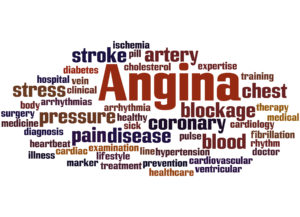

Stable angina is a very common problem in the UK due to coronary heart disease (CHD). CHD can be caused by many different factors including diet, fitness, genetics and other lifestyle factors. Your heart is a muscle, and like all muscles in the body, it needs oxygen to function properly. Therefore, a network of coronary arteries supply oxygenated blood to the heart muscles. With coronary heart disease however, these arteries become narrower and narrower due to fatty deposits on the inside of the arteries called atheroma. This causes a reduction in oxygen to the heart muscles, meaning the heart has to work harder to properly supply enough oxygen. This increases the persons’ blood pressure. If the GP did not check blood pressure (especially when the person is over the age of 40), they would not be able to notice any changes which may indicate that the person is starting to get heart disease. This is why your GP will always take your blood pressure when they see you. It is very hard to remove these atheroma, and they actually start to form from around the age of four.
Chest Pain
When you do exercise or anything strenuous, your heart will beat faster so more oxygen gets around your body. Since your heart is beating faster, your heart muscles call for more oxygen as well. Therefore, your heart beats faster to make up for this, but the flow cannot get past the narrowed artery. Consequently, the muscle becomes starved of oxygen and start to cramp. Essentially, angina is the cramping of the heart muscle, which presents as chest pain. As it is in the centre of the chest, it can be hard if not impossible to distinguish between a heart attack. Remember, a heart attack, stable angina, and cardiac arrest are all totally different things. They can lead to each other, but they are all separate occurrences.
Managing Angina
Most instances when the heart has to beat faster than normal will bring that pain on. However, when the heart slows down again, the pain disappears. If pain becomes more common and begins to happen with less exercise, the condition is of the heart muscles is probably deteriorating. The atheroma will be getting bigger, meaning there will be less blood flow.
People who suffer from angina regularly will be on medication. One of the most common medications you will come across is GTN, Glyceryl Trinitrate, or Nitroglycerin.
The medication can be found in a small red bottle with a measured dose each time sprayed. Also, GTN can be found in a tablet form. To absorb GTN directly into their bloodstream, it would be taken sublingually – under the tongue. GTN dilates the blood vessels, restoring blood flow and reducing the blood pressure. This puts less strain on the heart as more oxygen can reach the muscle.
Unfortunately, one side effect of GTN is a splitting headache. GTN is a vasodilator, meaning it works by dilating blood vessels to drop blood pressure. This means that if GTN is taken in too great a dose, the patient may pass out or faint due to a dramatic drop in blood pressure. So it has to be taken with caution by the patient that it has been prescribed for, and any side effects must be monitored.
For more information on training courses, visit our “Courses” page which also includes our First Responder and First Person on Scene (FPOS) Courses.

